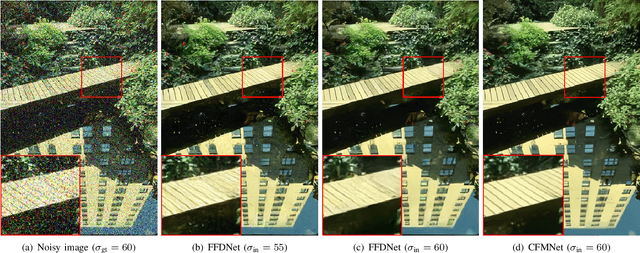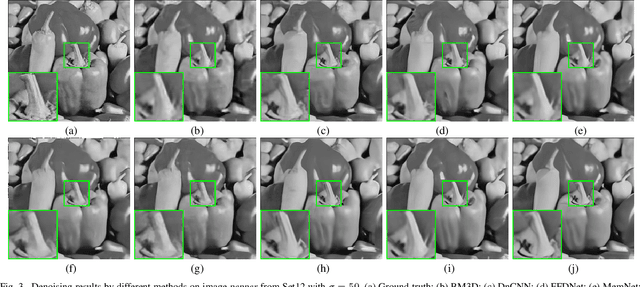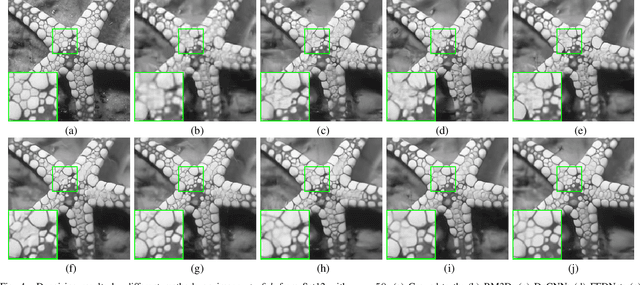Jiazhi Du
NTIRE 2024 Challenge on Short-form UGC Video Quality Assessment: Methods and Results
Apr 17, 2024



Abstract:This paper reviews the NTIRE 2024 Challenge on Shortform UGC Video Quality Assessment (S-UGC VQA), where various excellent solutions are submitted and evaluated on the collected dataset KVQ from popular short-form video platform, i.e., Kuaishou/Kwai Platform. The KVQ database is divided into three parts, including 2926 videos for training, 420 videos for validation, and 854 videos for testing. The purpose is to build new benchmarks and advance the development of S-UGC VQA. The competition had 200 participants and 13 teams submitted valid solutions for the final testing phase. The proposed solutions achieved state-of-the-art performances for S-UGC VQA. The project can be found at https://github.com/lixinustc/KVQChallenge-CVPR-NTIRE2024.
Flexible Image Denoising with Multi-layer Conditional Feature Modulation
Jun 24, 2020



Abstract:For flexible non-blind image denoising, existing deep networks usually take both noisy image and noise level map as the input to handle various noise levels with a single model. However, in this kind of solution, the noise variance (i.e., noise level) is only deployed to modulate the first layer of convolution feature with channel-wise shifting, which is limited in balancing noise removal and detail preservation. In this paper, we present a novel flexible image enoising network (CFMNet) by equipping an U-Net backbone with multi-layer conditional feature modulation (CFM) modules. In comparison to channel-wise shifting only in the first layer, CFMNet can make better use of noise level information by deploying multiple layers of CFM. Moreover, each CFM module takes onvolutional features from both noisy image and noise level map as input for better trade-off between noise removal and detail preservation. Experimental results show that our CFMNet is effective in exploiting noise level information for flexible non-blind denoising, and performs favorably against the existing deep image denoising methods in terms of both quantitative metrics and visual quality.
 Add to Chrome
Add to Chrome Add to Firefox
Add to Firefox Add to Edge
Add to Edge